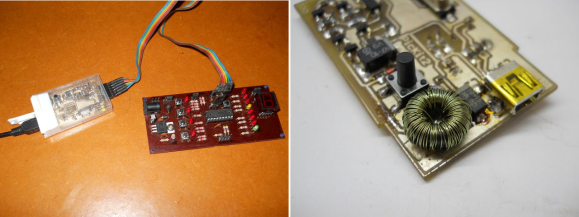[Taavi] has a problem – a wonky alarm clock is causing him to repeatedly miss his chemistry class. His solution? Outfit his clock radio with a supercapacitor, of course! But not just any supercapacitor – a home-brew 400 Farad supercap in a Tic Tac container (YouTube video in Estonian with English subtitles.)
[Taavi] turns out to be quite a resourceful lad with his build. A bit of hardware cloth and some stainless steel from a scouring pad form a support for the porous carbon electrode, made by mixing crushed activated charcoal with epoxy and squeezing them in a field-expedient press. We’ll bet his roommates weren’t too keen with the way he harvested materials for the press from the kitchen table, nor were they likely thrilled with what he did to the coffee grinder, but science isn’t about the “why?”; it’s about the “why not?” Electrodes are sandwiched with a dielectric made from polypropylene shade cloth, squeezed into a Tic Tac container, and filled with drain cleaner for the electrolyte. A quick bit of charging circuitry, and [Taavi] doesn’t have to sweat that tardy slip anymore.
The video is part of a series of 111 chemistry lessons developed by the chemistry faculty of the University of Tartu in Estonia. The list of experiments is impressive, and a lot of the teaser stills show impressively exothermic reactions, like the reduction of lead oxide with aluminum to get metallic lead or what happens when rubidium and water get together. Some of this is serious “do not try this at home” stuff, but there’s no denying the appeal of watching stuff blow up.
As for [Taavi]’s supercap, we’ve seen a few applications for them before, like this hybrid scooter. [Taavi] may also want to earn points for Tic Tac hacks by pairing his supercapacitor with this Tic Tac clock.
[Thanks, Lloyd!]




 Sure, mint tin housings are great. But you have to defend against shorts, and cutting out holes for ports and buttons is dangerous business. [Daniel] prefers plastic, and he tipped us off about
Sure, mint tin housings are great. But you have to defend against shorts, and cutting out holes for ports and buttons is dangerous business. [Daniel] prefers plastic, and he tipped us off about 








